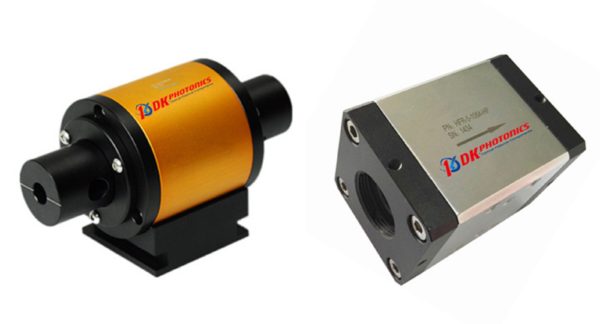Faraday rotators and isolators are commonly used in telecommunication, electronics, and other industries. However, you may have noticed that there are many companies which offer high power Faraday rotators and isolators. Just due to the addition of two words “high” and “power”, most people wonder whether they are different from the typical ones, what these components are, when they are used and how they work. If you are one of them who are curious to know all such things, you have landed at the right place as here we have discussed answers to all these questions.

By definition, high power Faraday rotators and isolators are similar to the typical ones. While rotators are magneto-optic devices which are used to rotate the polarization state with the use of Faraday Effect, isolators are the components which transmit light in a specific direction and block the light traveling in the opposite direction.
When High Power Faraday Rotators and Isolators are Used
At high power, there is a high possibility of damage or disruption in the operation of the laser system through optical feedback. Thus, a high power faraday isolator is inserted in the system to reduce this feedback. Since they are based on Faraday Effect and are passive, unidirectional and nonreciprocal devices that employ the phenomenon of magneto-optic rotation, they can isolate the source and protect the laser oscillator from reflections in an optical system. In brief, they act as optical diodes that allow the propagation of light in only one direction.
Construction and Working of High Power Faraday Rotators and Isolators
Faraday isolators consist of a Faraday rotator, two polarizers, and a body to encapsulate the parts. On the other hand, the Faraday rotator is made of magneto-optically active optical material which is placed inside a permanent magnet.
Let’s consider an example of a Faraday optical isolator in which the magneto-optical rod is cut from glass that is polished to the flatness of λ/10 and has a parallelism better than 10 arc seconds. It is coated for anti-reflection with a residual reflection of <0.2% each side in the range of about 765-835 nm.
The polarizers are made from an air-spaced material such as Glan prism made of calcite. The entrance and exit faces of polarizers are coated with anti-reflection material with a residual reflection range of <0.3%. Polarizer transmittance is more than 98%. So, in this case, this will provide a total transmittance of better than 85% for the isolator.
The unpolarized or polarized laser light is entered through input polarizer and linearly polarized to 0 degree. Next, the linearly polarized light will enter through Faraday rotator rod and the plane of polarization will rotate as the light propagates along the rod axis. The Faraday rotator is tuned for rotating the plane of polarization to 45 degrees. Then, the light passes through the output polarizer whose transmission axis is also at 45 degrees.
Any light that reflected back re-enters the isolator through output polarizer and becomes polarized at 45 degrees. This light then passes through Faraday rotator which produces another 45 degrees of rotation to make the light polarized at 90 degrees or horizontally before being stopped or blocked by the polarizer, still at 0 degrees.
Thus, the laser light is isolated from its reflections. This is how high power Faraday rotator and isolator work together.